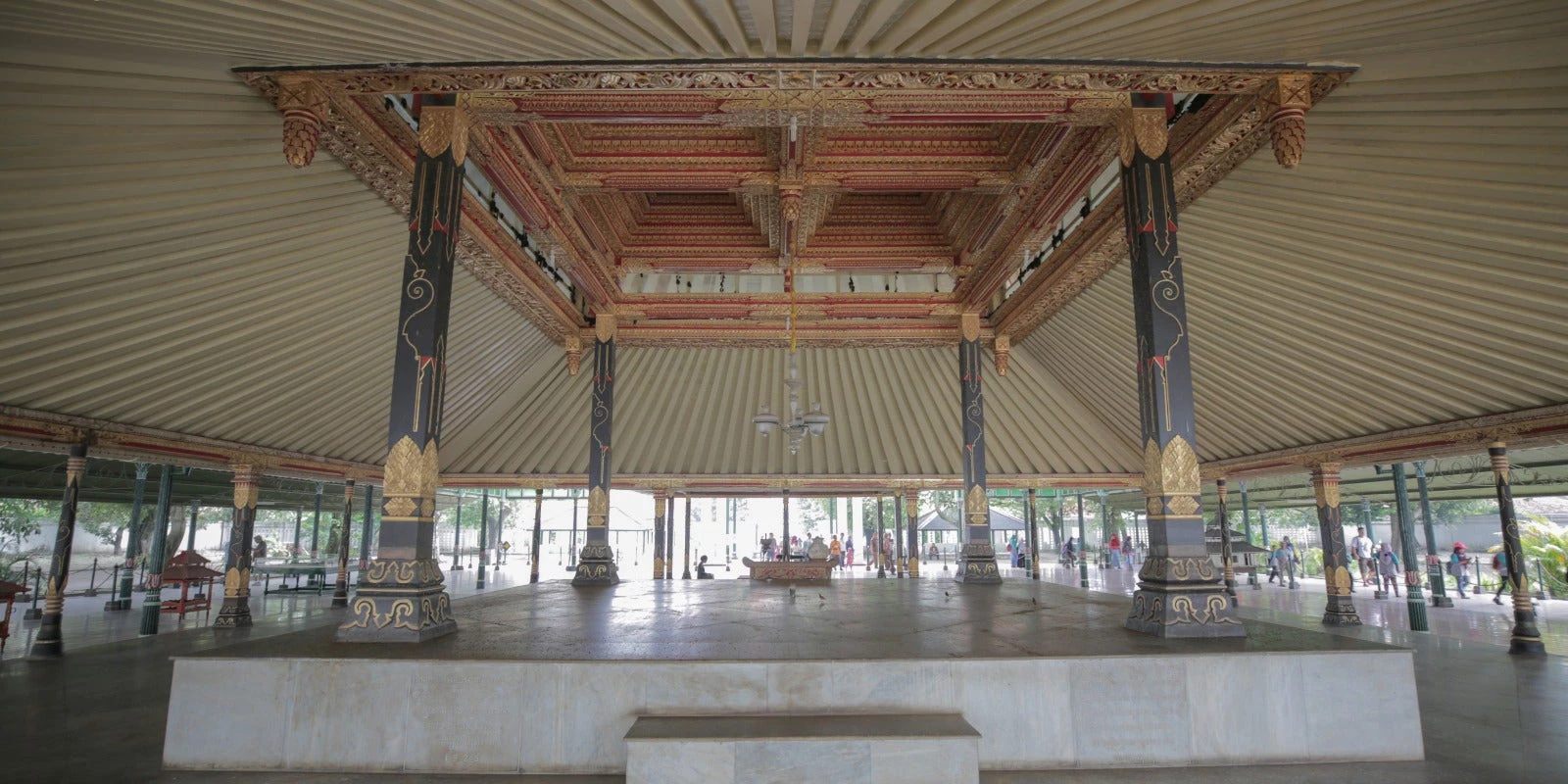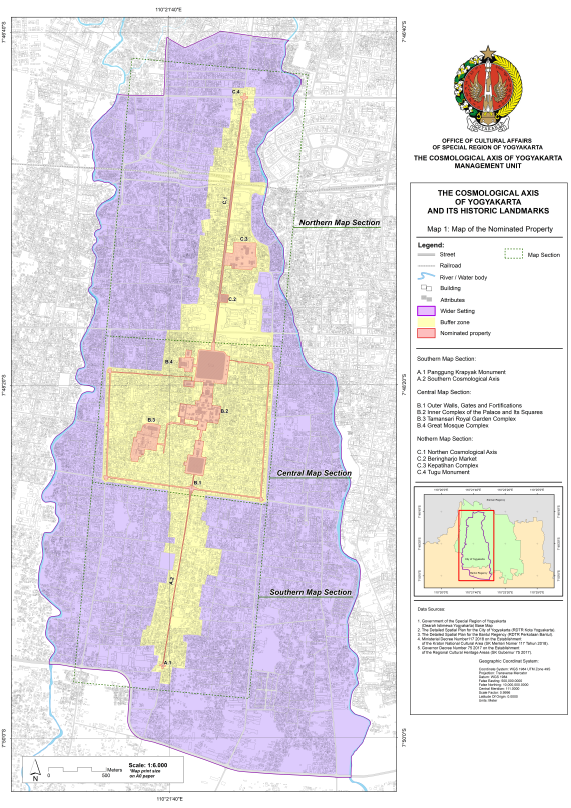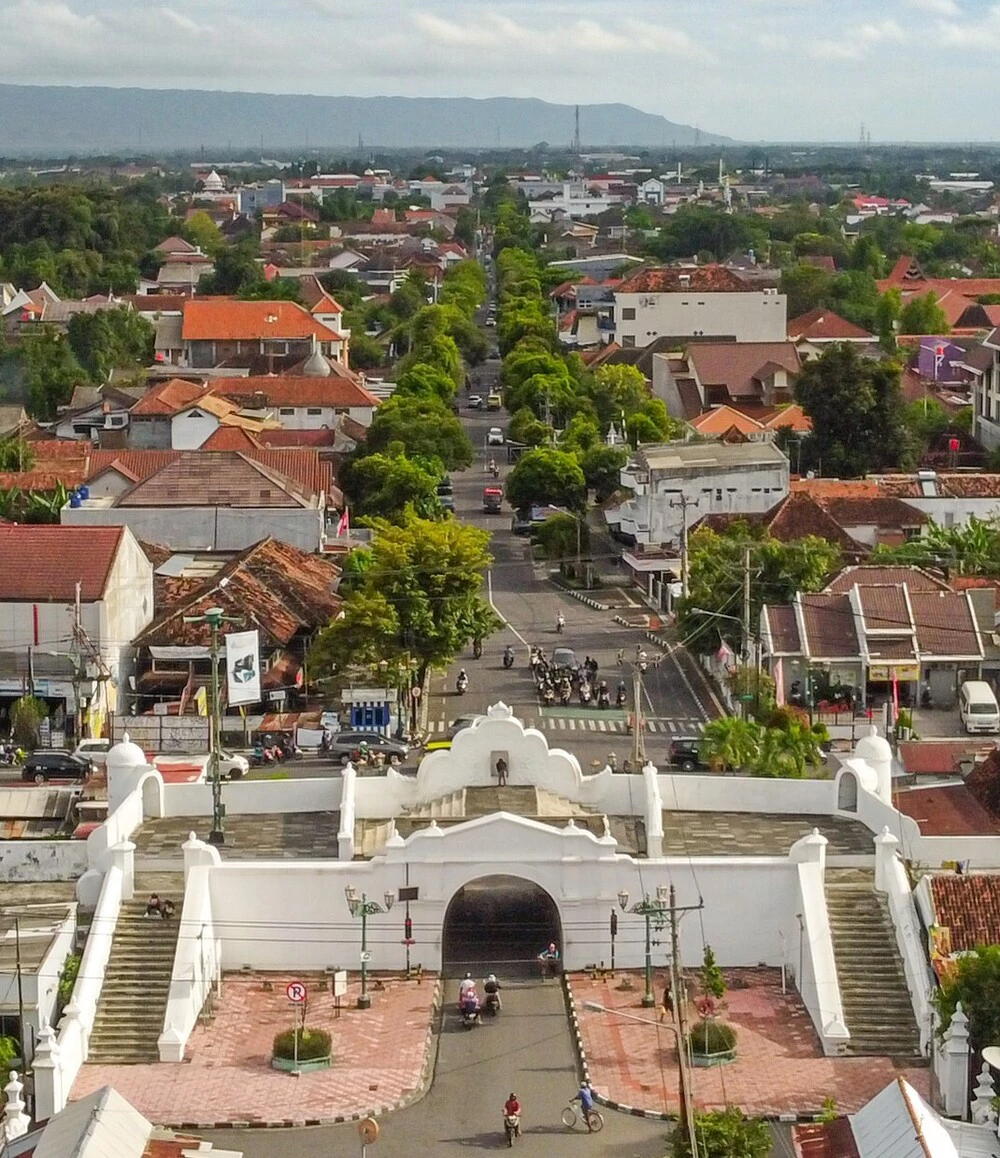 The cosmological axis of Yogyakarta and its historic heritage landmarks. Photo: © Tepas Tandha Yekti, Karaton Ngayogyakarta Hadiningrat/UNESCO
The cosmological axis of Yogyakarta and its historic heritage landmarks. Photo: © Tepas Tandha Yekti, Karaton Ngayogyakarta Hadiningrat/UNESCO
In the heart of Indonesia, where the mesmerizing Mount Merapi casts its shadow over the tranquil Indian Ocean, a six-kilometer-long axis has long been the keeper of Javanese culture and cosmic beliefs. In September 2023, The Cosmological Axis of Yogyakarta was officially declared the world’s newest UNESCO World Heritage site. The World Heritage inscription will help buoy Indonesia’s growing cultural tourism industry and is the result of close collaboration between the Government of Indonesia, local communities, and development partners including the World Bank.
Tourism Development and the World Bank
Over the past five years, the World Bank has worked hand in hand with the Government of Indonesia to finance and support the development of sustainable and responsible tourism in six key destinations in the country, ranging from cultural monuments like those in Yogyakarta to some of the most ecologically diverse national parks on earth to world-class trekking and diving sites. The effort aims to help preserve and share Indonesia’s unique cultural and natural assets with the world, and in the process drive sustainable and environmentally responsible economic growth for generations to come.
Bird-eye-view of the Cosmological Axis, taken from above Plengkung Nirbaya, a historical gateway and monument. Photo: © Management Unit for the Cosmological Axis of Yogyakarta
A Cosmic Heritage
The Cosmological Axis of Yogyakarta and its Historic Landmarks are a living testament to the rich cultural and historical tapestry of Indonesia. The six kilometer north-south axis stretches from Mount Merapi to the Indian Ocean. At the center of the axis is a palace (the ‘Kraton’), and surrounding it are a series of related monuments. The axis embodies key beliefs about the cosmos in Javanese culture, including the marking of the cycles of life. Intricately crafted stone stairs symbolize the stability and the hierarchy of Javanese society, while tripartite divisions of buildings correspond to the three realms of Javanese cosmology: the human world, the atmosphere, and the heavens. Since its establishment in the 18th century, the axis has served as a center point of government and Javanese cultural traditions.

Map of the Cosmological Axis of Yogyakarta. Map: © Management Unit for the Cosmological Axis of Yogyakarta
As the tenth World Heritage site in Indonesia, the Cosmological Axis of Yogyakarta marks Indonesia’s growing commitment to share its rich cultural assets with the world. Protecting its cultural heritage is also helping Indonesia to grow and diversify its tourism economy, which currently comprises about 5 percent of the country’s GDP. With approximately 80 percent of visitor spending accruing back to the Indonesian economy, attracting high-quality tourism can provide a substantial boost to the nation’s growth. The World Heritage status will also bring in more international funding for preservation of the Axis, supporting not only physical safeguarding of the site, but also community participation and empowerment initiatives.
A Visionary Master Plan
Underlying the World Heritage accolade was a plan nearly five years in the making. Beginning in 2018, government bodies, local communities, and private sector partners came together to prepare an Integrated Tourism Master Plan (ITMP) for Yogyakarta and its surrounding areas, financed and supported by the World Bank. The ITMP served as blueprint in which government, communities, and investors articulated a joint vision for tourism development. The guiding vision of the ITMP was for the area “to become a world-class sustainable tourism destination, through the preservation of Javanese wisdom”.
The ITMP for Yogyakarta and its surrounding areas has now been completed and like other IMTPs in the country is expected to be adopted as a Presidential Decree to enshrine its priorities into national law. Instead of prioritizing new construction projects as had often been the case in the past, the plan emphasized the rejuvenation and protection of existing tourism attractions and monuments. This concerted effort to protect and preserve local cultural assets became key factor in UNESCO’s decision to ascribe World Heritage Status to the axis.
Investing in communities
In addition to protecting cultural assets, the ITMP also focuses on distributing the economic benefits of tourism back to local host communities, prioritizing investments such as improved water and sanitation, upgraded roads and sidewalks, and support to local small businesses and workers. This approach ensures that tourism growth enriches the communities it touches while simultaneously preserving the heritage that draws visitors.
Obtaining the coveted World Heritage status is not the end goal; rather, it marks the beginning of a long journey focused on effective management, heritage conservation, and the protection of a significant and important destination. A well-defined tourism vision and plan, encapsulated in the ITMP, will assist relevant government agencies and stakeholders in sustaining the World Heritage status and fostering a positive impact on its exposure, particularly in enhancing the tourism sector.
In addition to the ITMP, the World Bank is also working hand-in-hand with local government and communities to support training of local staff in heritage safeguarding and a series of awareness-raising activities and tourism development trainings supported for local communities. Through planning and participation, it is anticipated that Yogyakarta will thrive as a cultural World Heritage site, generating positive impacts and benefits for its people.
Yogyakarta's Cosmological Axis is now open to the world, beckoning travelers to explore Indonesia’s rich and timeless culture. By embracing heritage as a catalyst for tourism, Indonesia has made a significant new stride on the road to sustainable tourism development.
The Indonesia Tourism Development Initiative
The Indonesia Tourism Development Project (ITDP) is a landmark effort backed by the Indonesian government, with significant financial support of US$300 million from the World Bank, and additional grants from the Government of Switzerland (SECO). It's not just about tourism – it's about sustainable and responsible tourism. The project casts a wide net, focusing on six key destinations that highlight Indonesia’s rich tapestry of culture and nature. This includes the newly recognized Cosmological Axis of Yogyakarta and the breathtaking Komodo National Park, home to the world’s only Komodo dragons (Varanus komodoensis). Beyond these sites, the ITDP's support for Integrated Tourism Master Plans in various regions ensures that Indonesia's tourism growth is not just vibrant, but also sustainable for generations to come.





Join the Conversation